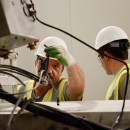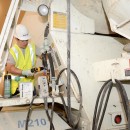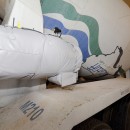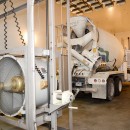Though the weather has cooled off as winter approaches, it wasn’t very long ago that temperatures in Bryan, Texas, were reaching triple digits. Not exactly the perfect weather for cold-weather testing, right? For the Texas A&M Transportation Institute’s (TTI’s) Environmental and Emissions Research Facility (EERF), the hot weather outside proved no match for the icy weather inside.
“Our goal was to obtain a specification that showed our units could withstand temperatures of 20 degrees without freezing, and this facility fit our needs perfectly.”Verifi’s Research and Development Engineer, Mike Topputo
Verifi LLC from Westchester, Ohio, recently conducted a week-long project in the EERF that had chamber temps dipping well below freezing for several days.
“Verifi has a system that they install on their client’s concrete trucks that combines a substance with concrete as part of the mixture process,” says TTI Research Specialist Jeremy Johnson. “Up north, sometimes these trucks sit out all night or for a few days in the cold. What we were doing is putting a concrete truck inside the EERF with Verifi’s unit installed, freezing it for a few days and then testing it periodically to make sure it wasn’t frozen and would still work in cold weather.”
According to Johnson, this was the first time the EERF had been put through its paces running at such a low temp for an extended period of time. But he says conducting such low-temperature testing amid sweltering temperatures outside posed no problems.
“Once we got down to our target temperatures, there were no concerns for maintaining the cold, since we recirculate the air inside the lab and the walls are well insulated.”
In addition to TTI supplying the testing chamber, TTI Communications also provided photographic and videographic support to assist in documenting the testing.
“Jeremy was very helpful every step of the way,” said Verifi’s Research and Development Engineer, Mike Topputo, who discovered the EERF while conducting an online search. “He took care of everything we needed, and we even used the fans at 35 mph to simulate driving conditions. Our goal was to obtain a specification that showed our units could withstand temperatures of 20 degrees without freezing, and this facility fit our needs perfectly.”



